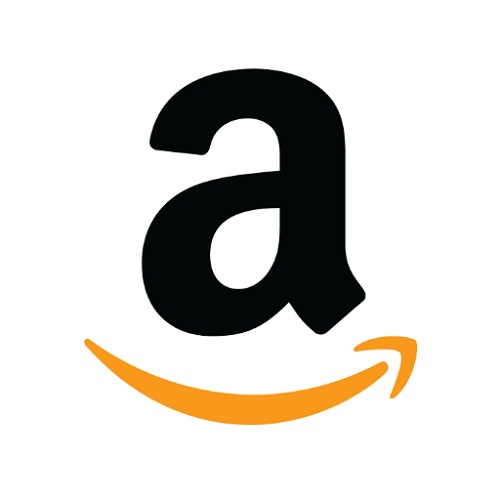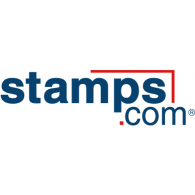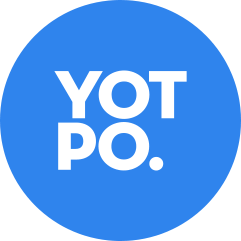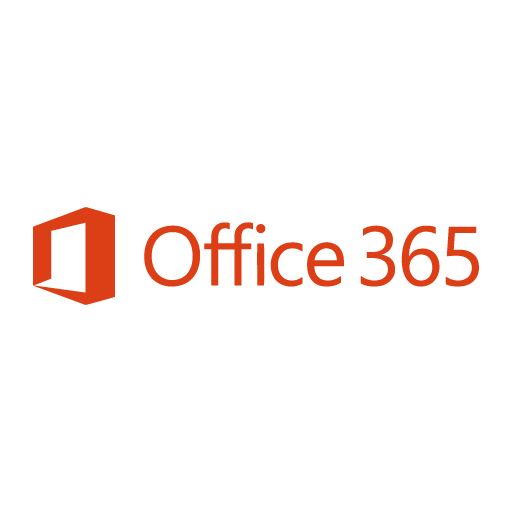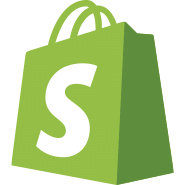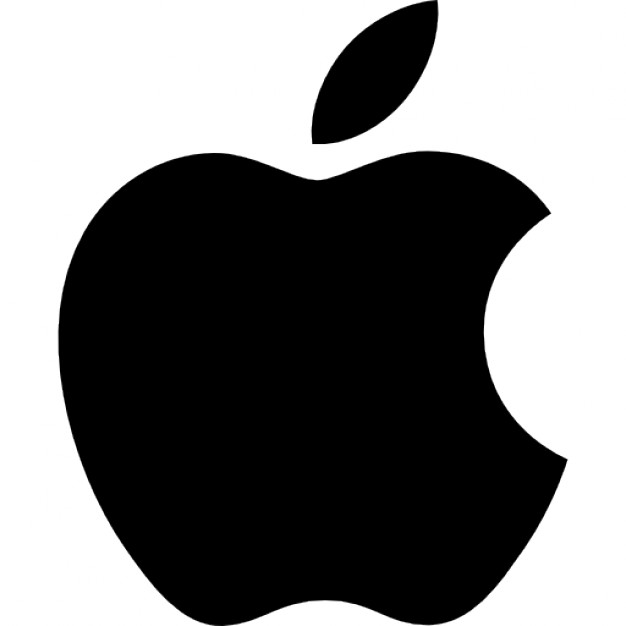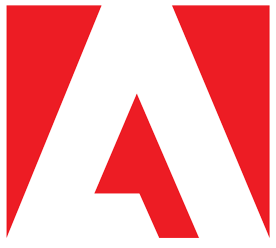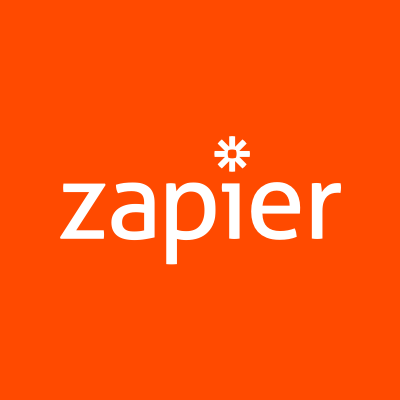Leaving The Cubicle To Start A $23K/Month Soap Company
Hello! Who are you and what business did you start?
Howdy! Thanks for having me here!
Outlaw Soaps was born from a love of adventure trapped in my heart, trapped inside a cubicle. I was working at the Oprah Winfrey Network in Los Angeles, and cubicle life was becoming increasingly difficult for me to maintain. I often got started with my day before dawn, and got home after dark. My life felt like an endless march toward an uncertain and undesirable destination: 401k? Retirement? The joy of going home and never leaving? These things didn’t really appeal to me at all.
Instead, my husband Russ and I craved adventure. We were involved in the Burning Man culture, so much of our adventurous pursuits involved heading out to the desert and making big art, then burning it.
On our honeymoon, we picked up a single bar of soap from a farm store. I smelled it every morning (and refused to use it -- I still have it to this day) and it reminded me of our wonderful honeymoon, of staying in a cabin in the woods, of walking on the beach, of the general wonderfulness of our adventure.
One morning, I looked at the ingredients of the soap and was surprised to find that it was only a few ingredients. In talking with people, we started opening up to the concept that we could probably make cold process soap quite easily, and that we could make it smell like anything we wanted. So… why not make it smell like the things we loved? Things like campfire, leather, and whiskey.
We started making the soap in January of 2013 and launched our business in March of the same year, with a meager $13.72 of supplies from the grocery store (I think our total start-up costs were a couple hundred dollars).
We got a pretty big order from Fab.com right out of the gate, and in a dizzyingly (and, in retrospect, confusingly) optimistic move, I quit my full time job and dove head-first into the soap business.
It only took us a year to crash into our best selling product (and the one that kind of encompasses the concept of our brand): Blazing Saddles.
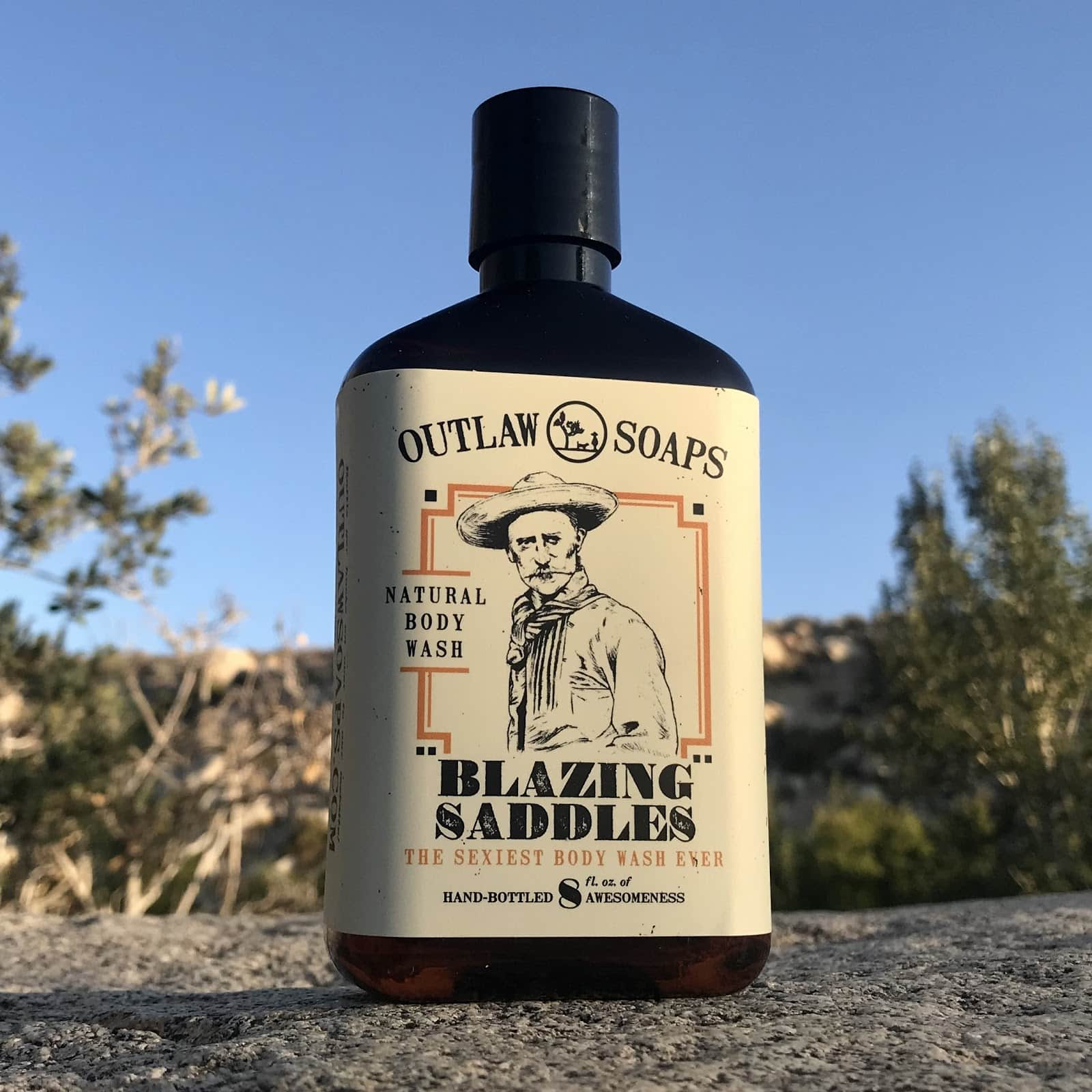
It smells like a tack room after a gunfight: leather, gunpowder, sandalwood, and sagebrush. Really, a cowboy / western scent for people who love the raw ruggedness of the Wild West.
Over the years, we created many products in our most popular scents. Right now, we have bar soap (of course), body wash, solid cologne and (brand new) spray cologne, lotion, and hand soap, plus a set of alcohol-flavored lip balms.
In the past 12 months, we made an average of $23,000/month. We make about a third of our annual income in the last 3 months of the year. Christmas is a biiiig deal for us.
More important than the money, though, we’ve made so many friends from our customers and business contacts from the business. 46% of our website orders are from repeat customers. Once someone joins the Outlaw gang, we strive to be their sidekick for the long haul. We often hear from customers that our customer service is the best they’ve ever experienced. I think this is because we’re absolutely emphatic about ensuring the satisfaction of our genuinely incredible customers, no matter what.
We feel like our Magnificent Seven Outlaw Values really define us as a company and give our customers a good reason to be loyal to us. (in addition to fantastic product, of course)
What's your backstory and how did you come up with the idea?
In retrospect, I’m pretty sure no one else has the foolishness we had in the start of our business. But, you know, it worked out ok…
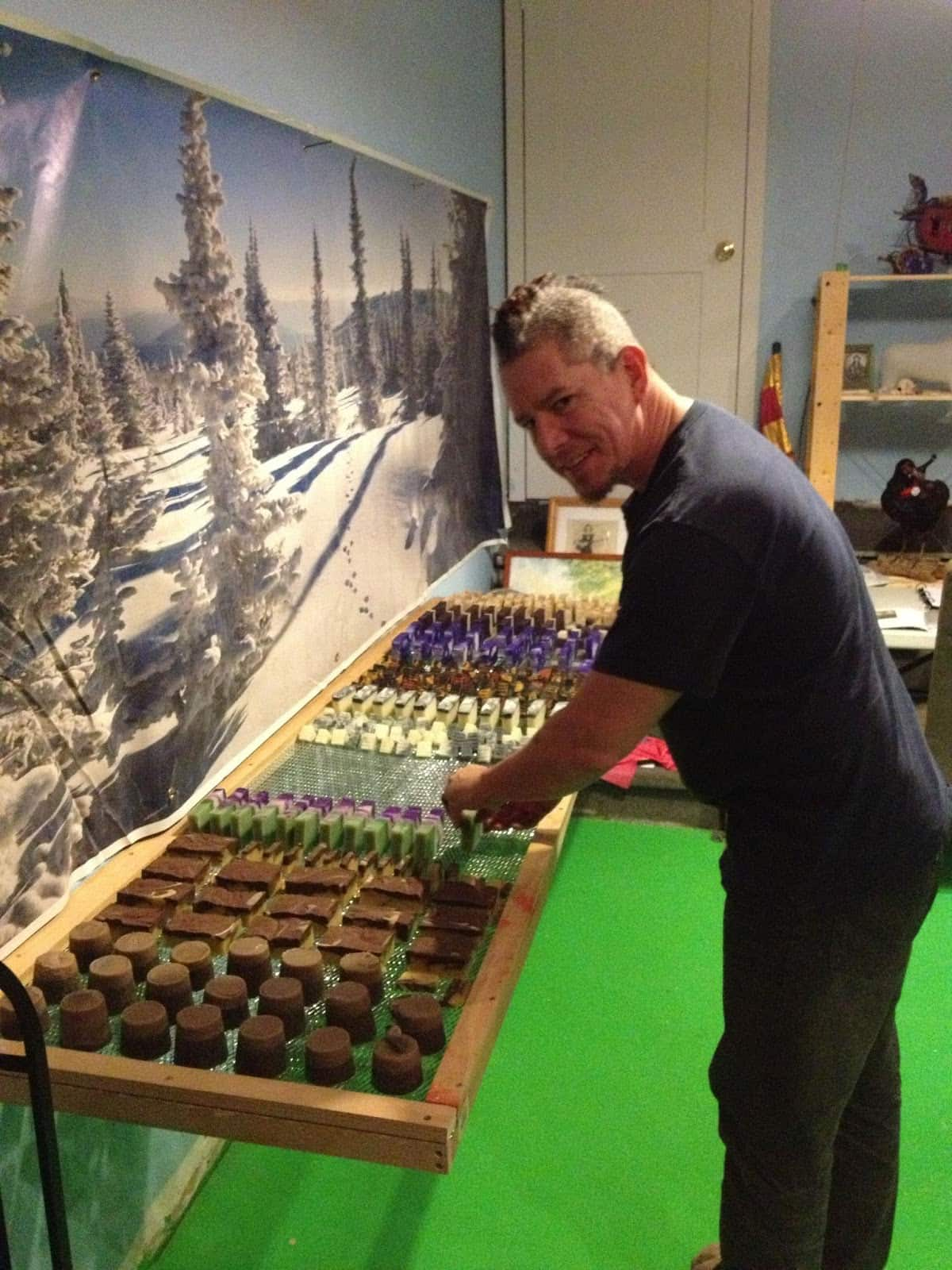
So, first, let me say that we had never made soap before we decided to start a soap company. Yeah, seriously.
My friend and mentor, Deb, said to me one day, “Danielle, lots of people are going to tell you that you can’t sell soap until you’ve been making it for a year. Don’t listen to them.”
My life felt like an endless march toward an uncertain and undesirable destination: 401k? Retirement? The joy of going home and never leaving? These things didn’t really appeal to me at all.
I’m so grateful for her kind words of advice and encouragement… but the hurdles weren’t overcome yet. We still had to actually make the soap to sell.
Aside from that big Fab order, almost no strangers bought our soap in the first year. I remember the first >$100 order we got, which from a fricken’ celebrity, Baxter Holmes, a sports writer for ESPN. I think we just about lost our minds on that day. He tweeted about our Bacon Soap, which caused a minor twitterstorm of “what the hell?” and “why would they?”
Because Bacon Soap. That’s why.
After I quit my job, Russ was working as a handyman, but the soap business wasn’t really making any money yet. We were always sold out and experiencing stock issues. Our quality, admittedly, wasn’t that awesome because we were still learning to make soap. Heck, I was still writing every label by hand.
It was, let’s say, not a super business model.
And we had zero money. I pulled money out of my 401k (penalties be damned) until there wasn’t any more there. I applied for credit cards. We lived on credit cards.
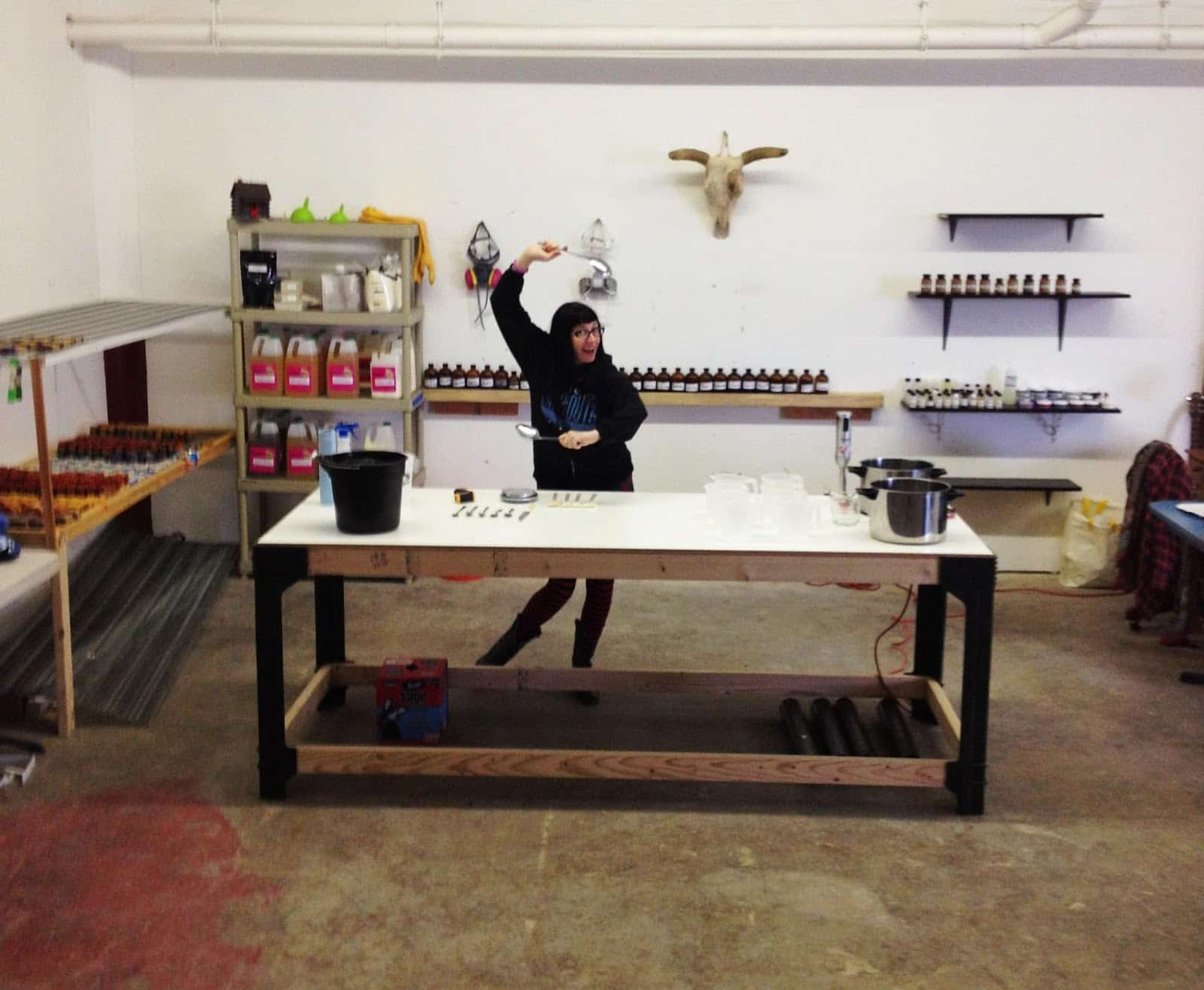
Those were lean and terrifying times.
In February of 2014, less than a year after we founded our business, I wrote the blog post “There’s no difference between flying and falling, until the end,” where you can really read the sadness, confusion, and desperation in my voice.
“I'm flailing. I'm spinning out,” I wrote.
Our friends rallied around our little business and bought us a bunch of supplies through a Kiva loan.
Lots of people think I was a strong and powerful force in those early days, but I was hella terrified.
And that’s what I want to get across in this interview: It’s ok to be terrified. It’s ok to feel like you’re going to throw up for the first couple years. It does get better.
Describe the process of designing, prototyping, and manufacturing the product.
These days, Russ heads up all the production. We have a set and predictable development process for new products:
- Get the concept from our customers (like I said, they’re very smart, and we’re very democratic).
- In January, at our annual meeting, we go over the products that have been submitted to see if they fit with our concept (for example, bath salts aren’t going to do well with our ultra-active crowd).
- For the 3 - 5 products that pass muster, we make a small test batch and send to a small test group, which we get from our newsletter list.
- If those tests are successful, we send them in our next subscription box, which is a bi-monthly box of Outlaw Soaps products exclusive to the subscription box subscribers.
- People often post commentary of their new products in our Outlaw Soaps Labs Facebook Group, and we take that commentary to heart.
- We start the product design phase after that, where we evaluate the types of packaging that might be appropriate for the product.
- We enlist the designer to design the label/box for the product and go through the rounds of design and revision.
- Design proofs come back from the company and we give a go/no-go.
- After the “go” is given, we hit refresh on the tracking page about 100 times (you know what I’m talkin’ about).
- We send the final products to Products On White Photography for press-ready photos.
- I write the descriptions and take some “lifestyle” photos of the products in fun and interesting environments.
- We post the new white photos to the website and Amazon.
- We send the new products to our wholesale sales rep.
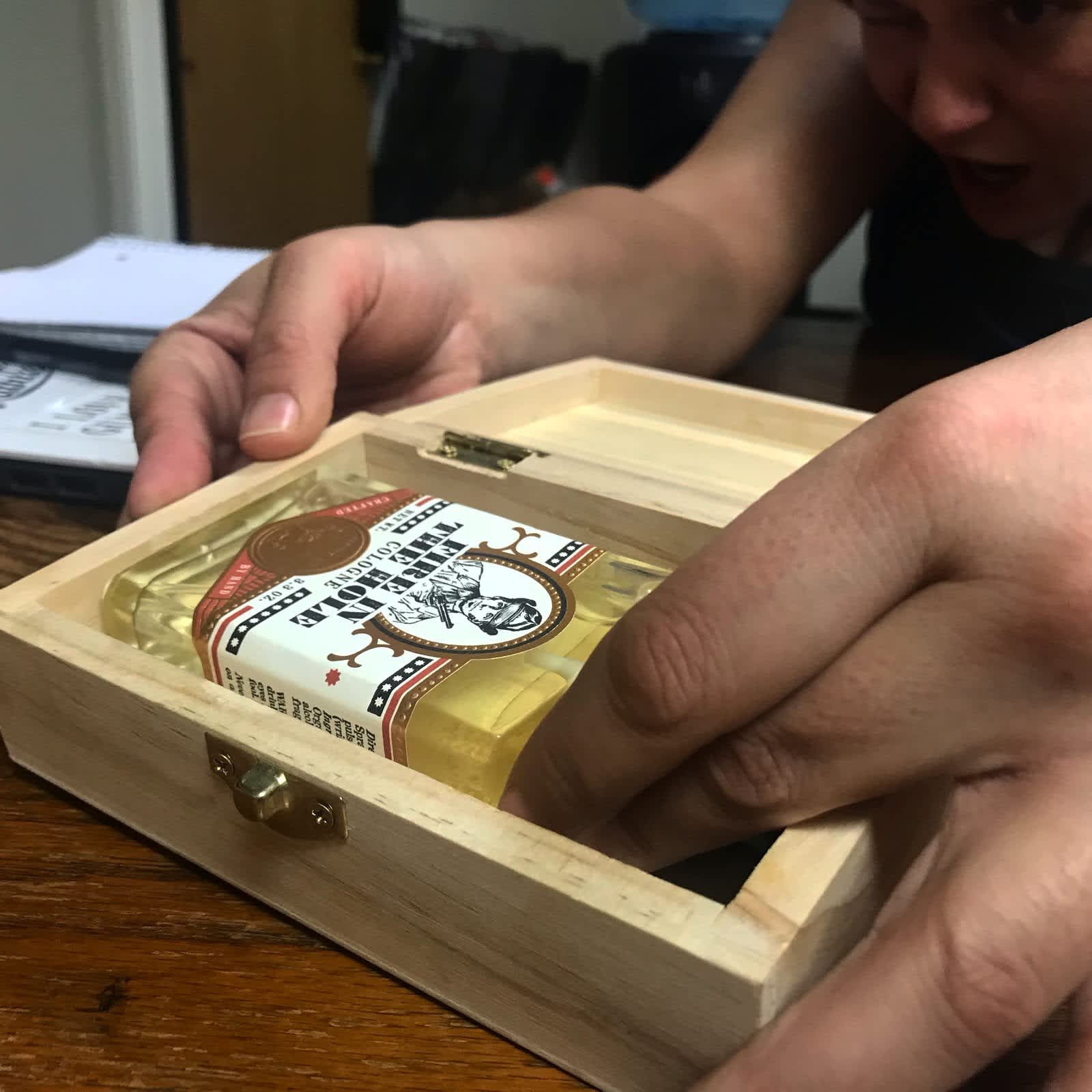
Since most of our stuff is made in-house, we had to come up with a way that we could do product testing (without testing on animals). We found that our Clean Getaway Subscription Box Subscribers are more than happy to get our untested products early and let us know what they think.
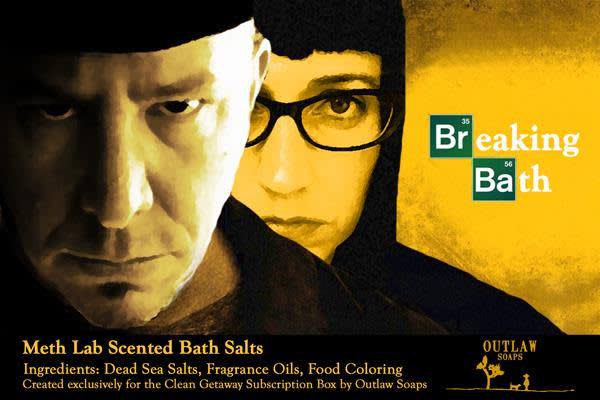
(here’s an example of an early subscription box product)
Describe the process of launching the online store/business.
Basically, all I knew when we started Outlaw Soaps was website work, so starting a website was a no-brainer. I didn’t know production, I didn’t know business, I didn’t know sales… but I knew websites, and I could write.
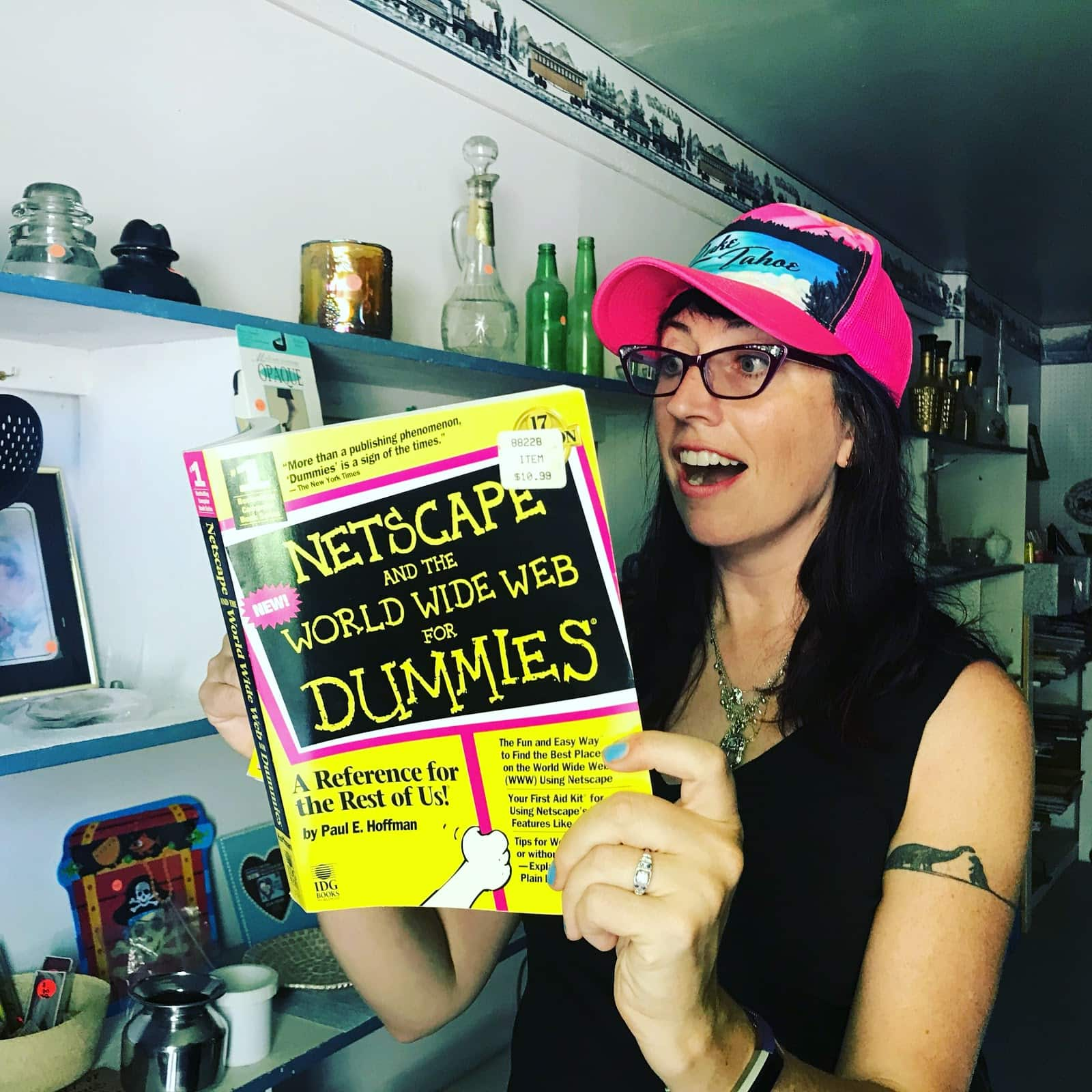
We started with just a straight HTML site. I don’t even remember how we took orders… it might have been a PayPal link. So ridiculous.
The first day of our launch, someone (one of my friends) tipped off Laughing Squid to our Unicorn Poop Soap. If you look at the photo, it’s absurdly amateurish. That first batch was made in a pyrex baking dish and scooped out with a spatula. We over-colored it and parents were sending us photos of their kids using them as bath crayons (which, for the record, they totally worked).
Regardless, it sold out in the first 2 hours of launch. We were officially off to the races!!
After that, we went on to WordPress with a WooCommerce plugin.
Our second Christmas in business, our WordPress website went down for 3 days because of a problem with our hosting company. I think we lost more than a thousand dollars at a time when we really didn’t have a thousand dollars to lose.
After calculating how much money we lost on those three down days, I decided to invest in Shopify. It’s expensive, but it’s a fully managed platform, meaning that if your website breaks at 3:00 in the morning and you’re in Paris, you can hop on a web chat with a friendly support specialist and they’ll help you get back online.
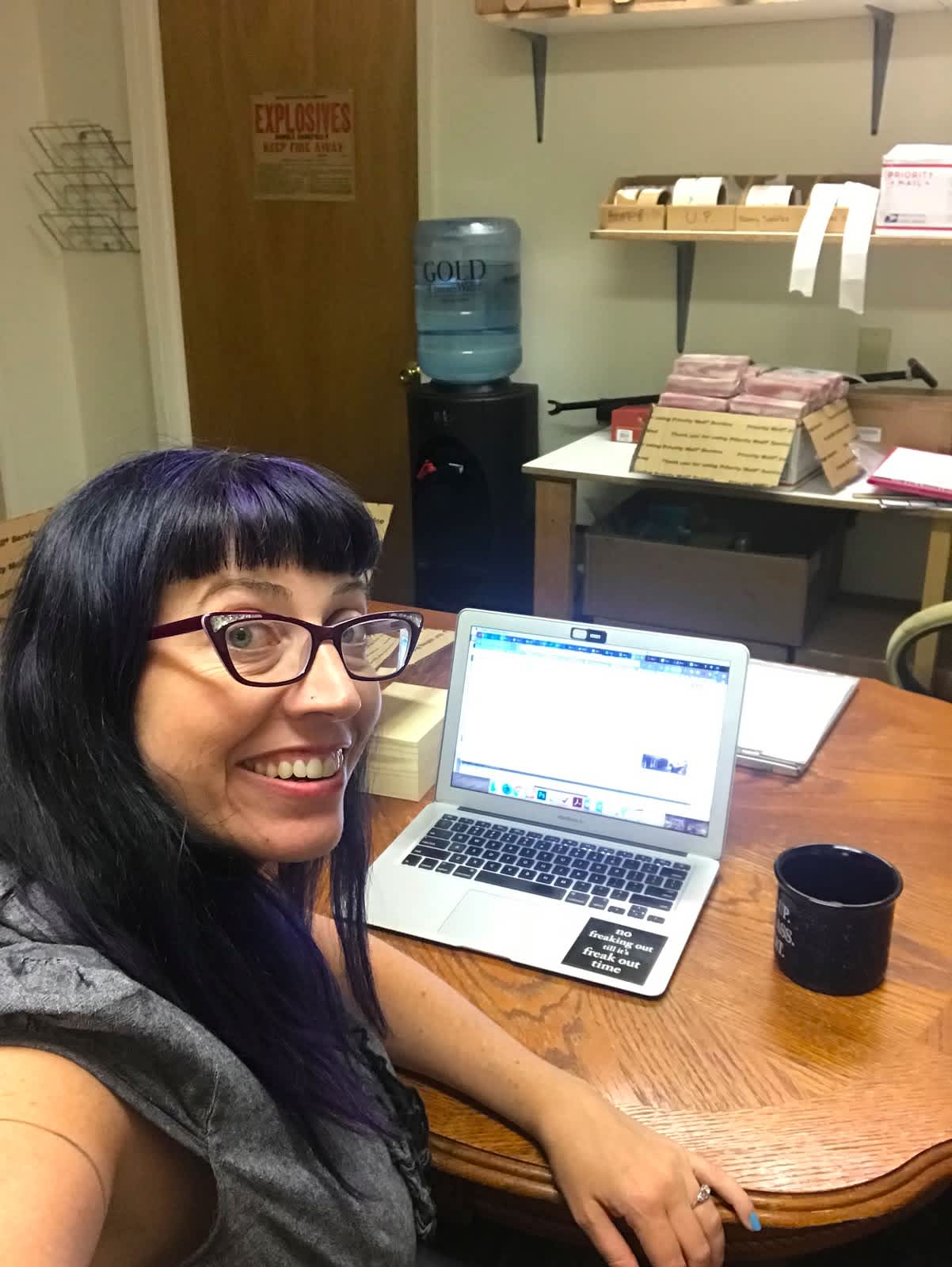
I think of Shopify less of an investment in our website business, and more of a free pass to a good night’s sleep.
By the time we went to Shopify, strangers made up the majority of our customers.
I feel like it’s really nice that friends and family support early businesses, but there should be absolutely no obligation, implied or implored. The last thing I want to do is alienate friends because they aren’t interested in our admittedly niche product.
Our mission since the very beginning of the business has been to find our right customers wherever they are, and build the most frictionless buying experience possible. We want our customers to buy our soap so easily that they forget they’ve done it (which is why we launched subscription boxes in 2014)
Since launch, what has worked to attract and retain customers?
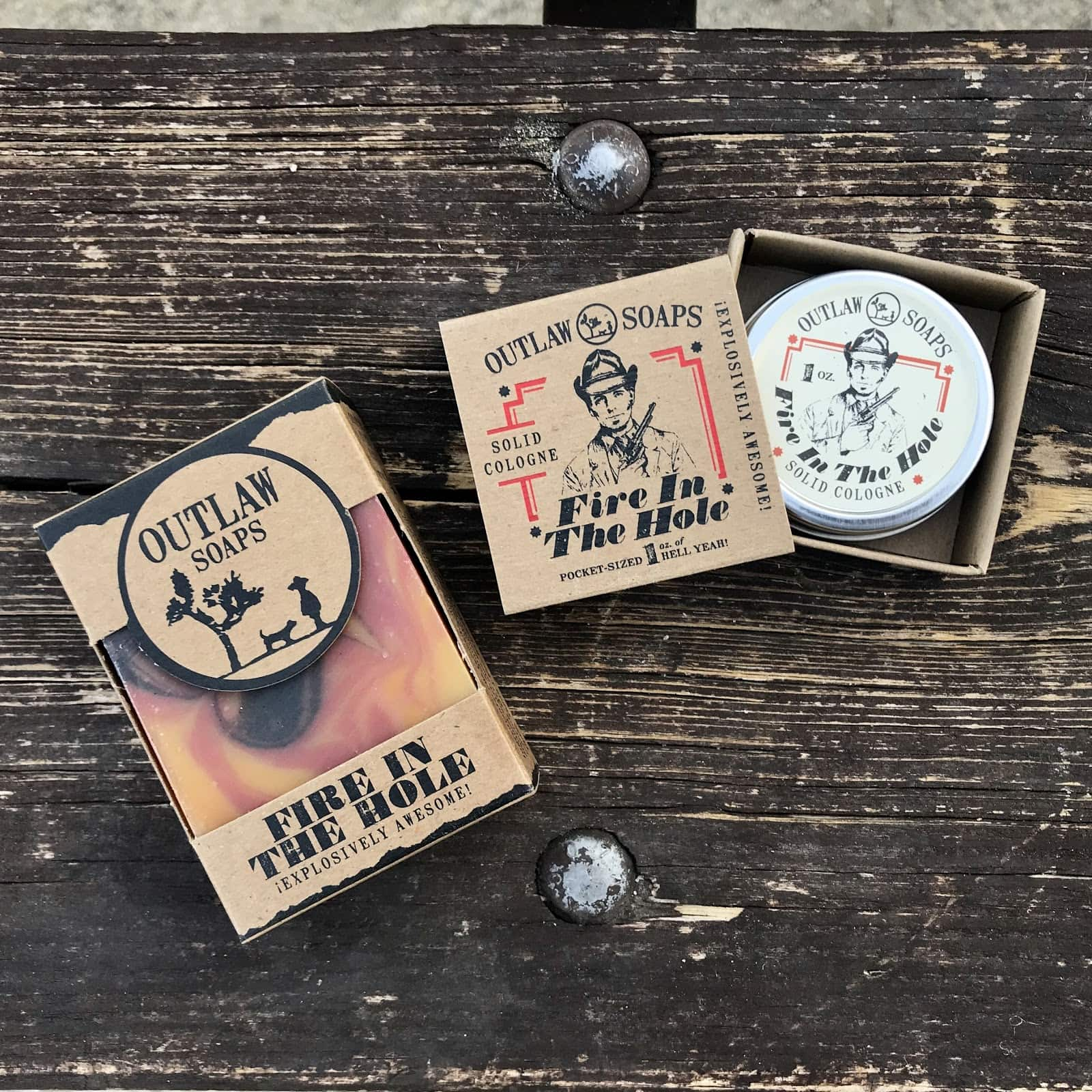
Despite our very technically savvy customers, we’ve found that plain old weekly email marketing and good SEO drives the majority of our orders. As I mentioned, once we have a customer, we tend to keep them, so we’ve been really interested in gaining new customers!
In order to drive content for the newsletter and also boost SEO, I am very rigorous about keeping our blog: Life in the Soap Lane. About 20% of our website orders come from search engines, so I have a huge incentive to keep our SEO hygiene solid.
Don’t expect that you have to know everything you need to do in order to get started. Accept that it will likely be a colossal mess and a wild ride, but that doesn’t make it any less worthy of an endeavor.
In the past year, I did a little (unintentional) experiment about what would happen if I stopped blogging, and our sales and traffic absolutely got punched in the gut. [sad trombone]
Side note: I did finish my first book, which you can see here.
What was I doing that was working so well before my little sabbatical? First and most importantly, I was engaged with our customers. Our customers are delighted to hear about us as a company, about our product development, etc. We get lots of our best product ideas from our customers.
Emails
In my emails, I am always a person writing as myself: Danielle Vincent, Bosslady of Outlaw Soaps. I don’t pretend to be doing anything I’m not… the email is clearly a mass email (no “Hi [first name], How are you?”), but I’m personable and I write frankly about our little company, express our excitement about a product, recount a particularly amazing product review, ask if people have a band (and if they do, would they share their music with us?), and generally be a human being running a company.
It’s amazing what kind of connections you can build by being yourself.
And I try to keep a regular weekly cadence. Weekly? Yes, it seems like a lot, but we’ve found this is a good sweet spot.
I wrote an article for GoDaddy about how to tell your brand story on your website. In the article, I talk about a business’s story being their core differentiator from the bazillions of other companies and manufacturers out there.
When people buy from our website (which is how we get most of our subscribers - there’s a box that’s pre-checked that can be unchecked which subscribes people to our newsletter), they’re kind of subscribing to the story of a small business in America -- just some likeable people trying to make a go of it in a rural California town.
And that story comes out weekly, and is told with products.
Side note: you can see what I mean by subscribing to our newsletter.
We offer incentives and new product launches in our newsletter, too, since I know that being subscribed to a newsletter is a burden for people. Last month, for example, we offered a limited edition and hand-numbered run of our spray colognes just to newsletter subscribers. They sold out within a few hours! So now, people are sure to open our emails right away so they don’t miss out on the specials (which I’m pretty sure is good for deliverability).
SEO and Blogging
In terms of blogging, geeze, I blog about anything (well, anything related to the business). I write about everything from a pictorial tour of our workshop (complete with happy employees) to our journey to sustainable packaging. Heck, I even wrote about how the Dollar Shave Club changed how I see marketing and business. Is the Dollar Shave Club a competitor? Maybe kinda, but not really. And I think this stuff is really interesting, and think our customers might, too.
But at the end of the day, ALL content is content, and good content is good SEO. For example, I wrote a blog post solely dedicated to our best body wash reviews. That’s a post that was suggested by a keyword tool, and I’m happy to oblige!
I have a very rigorous content calendar and I can’t always keep up, but it’s good to know if my well of brilliance is bone dry, I can grab a sip from my vast supply of brainstormed (and even crowdsourced) blog posts:
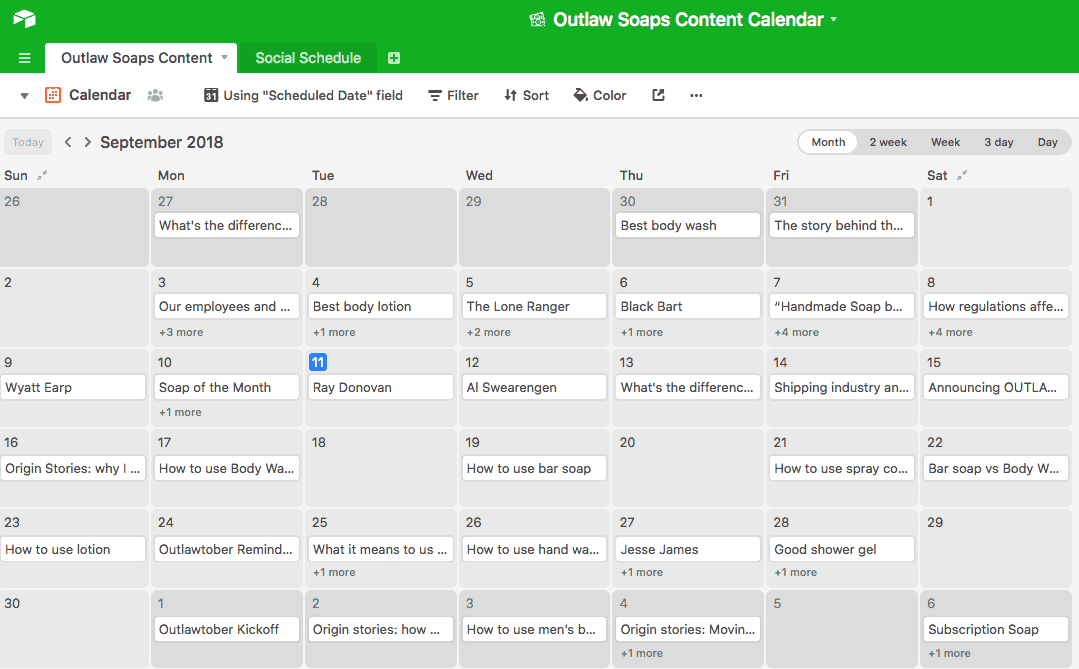
People sometimes say it’s hard to come up with content… I pull a lot of ideas from keyword generators, see what people are commenting on our Instagram and Facebook accounts, and generally take cues from anywhere I can find them. I have a lot of content flashes throughout the day, so my planner has a random ideas page and I just jot them down there, and transfer them to the editorial calendar later.
There’s an old saying that if you have a hard time coming up with 1 idea, come up with 10 ideas. If you have a hard time coming up with 10 ideas, come up with 100 ideas.
This isn’t meant to make you crazy, it’s just easier to have a bunch of ideas and pare them down to a select few good ones than it is to have one flash of brilliance.
Don’t worry about lightning in a bottle, just go outside and look at the sky.
We do a fair amount of social media marketing and I think our monthly Facebook ad spend is about $400/mo - really below what I’d consider to be the best practices of Marketing: 10% - 15% of gross revenue. But we just haven’t had the expertise or resources to do any better.
We’re hoping to change that next year. I do all the social media myself and it’s quite a task.
To be honest, we really want to do better at marketing. I feel like it’s a huge missed opportunity for our very social-worthy product.
How are you doing today and what does the future look like?
I’d say that how we’re doing now, in our 5th year, does validate the original business premise:
there are a bunch of rowdy, kick-ass people who are underserved by the current personal care options available, and when we get in front of our customers, they recognize us, we recognize them, and it’s loooooove.
That said, money is always tight. This weird fantasy I had of having customers and making tons of money and never worrying about anything ever again turns out to be totally unfounded in reality. We have been profitable since our first year, but in the past two years, we hired a couple people and our revenue still has to grow to catch up to their level.

Our gross margins across all our sales channels and products is about 57%.
Personal care has not historically had great margins, and as we move more into the grocery market, margins get slimmer (we distribute through UNFI, who takes 18% - 20% of our wholesale price). Because grocery margins are so slim, we’ve had to re-evaluate our strategy for grocery stores, and now practically cover it as a “marketing expense.” We cover costs, overhead, and labor, but there’s almost nothing on top of that.
Even though our products are on the higher end of price, we still barely break even. When people tell us that they think our prices are too high (which happens), we just have to grin and bear it. There’s no way to cut our prices without cutting our costs, and right now, we don’t have the volume to cut costs.
So yeah, we can still sell a lot of product and only come away with a little money. The economies of small business really are surprising.
For people who are starting out small manufacturing businesses, be sure to calculate the number of items you need to make and sell per month in order to break even. Can you make that? Can you sell it at a price that’s attractive to your target market? Will you need to up-scale your target market in order to have customers at that price point?
As it turns out, a person has to sell a lot of soap to break even.
Last year, we got an SBA-backed loan to expand our business, and next year, we’ll be seeking our first round of venture funding (know anyone with $500,000 and the desire to smell like campfire in the morning?).

On the other side, though, we are expanding our relationship with Whole Foods, pitching the primary military store distributor, and, truly, the future is incredibly bright. We’re about 3 weeks away from launching our new (and totally gorgeous) spray cologne, and, of course, the holiday season is nearly upon us.
These days, we have a diverse set of distribution channels. I found that having just one revenue channel puts us at unnecessary risk.
The rough breakdown of our distribution channels is as follows:
Amazon - 40%
OutlawSoaps.com - 30%
Grocery - 10%
Wholesale - 10%
Subscription - 10%
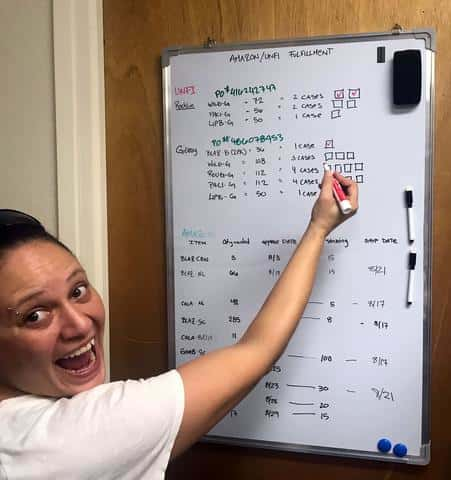
We immediately embraced Amazon as a sales channel because I feel like Amazon is going to take over the world. I recorded a quick video overview of Amazon and how the Fulfillment by Amazon works.
Next year, as I mentioned, we’re hoping to expand our grocery and even get into the Military Exchange, which includes 3,500 stores worldwide. This will represent a big step for us as a company, and we have been discussing what that will look like… but as Richard Branson says, “Screw it, let’s do it.”
We try never to lose sight of the fact that business -- and especially our business -- is supposed to be fun. We always try to put a bit of ourselves and our humor into everything we do, and we have hired a great couple of employees who are full of love and laughter. It’s really great to be surrounded by fun, responsible, awesome people.
Through starting the business, have you learned anything particularly helpful or advantageous?
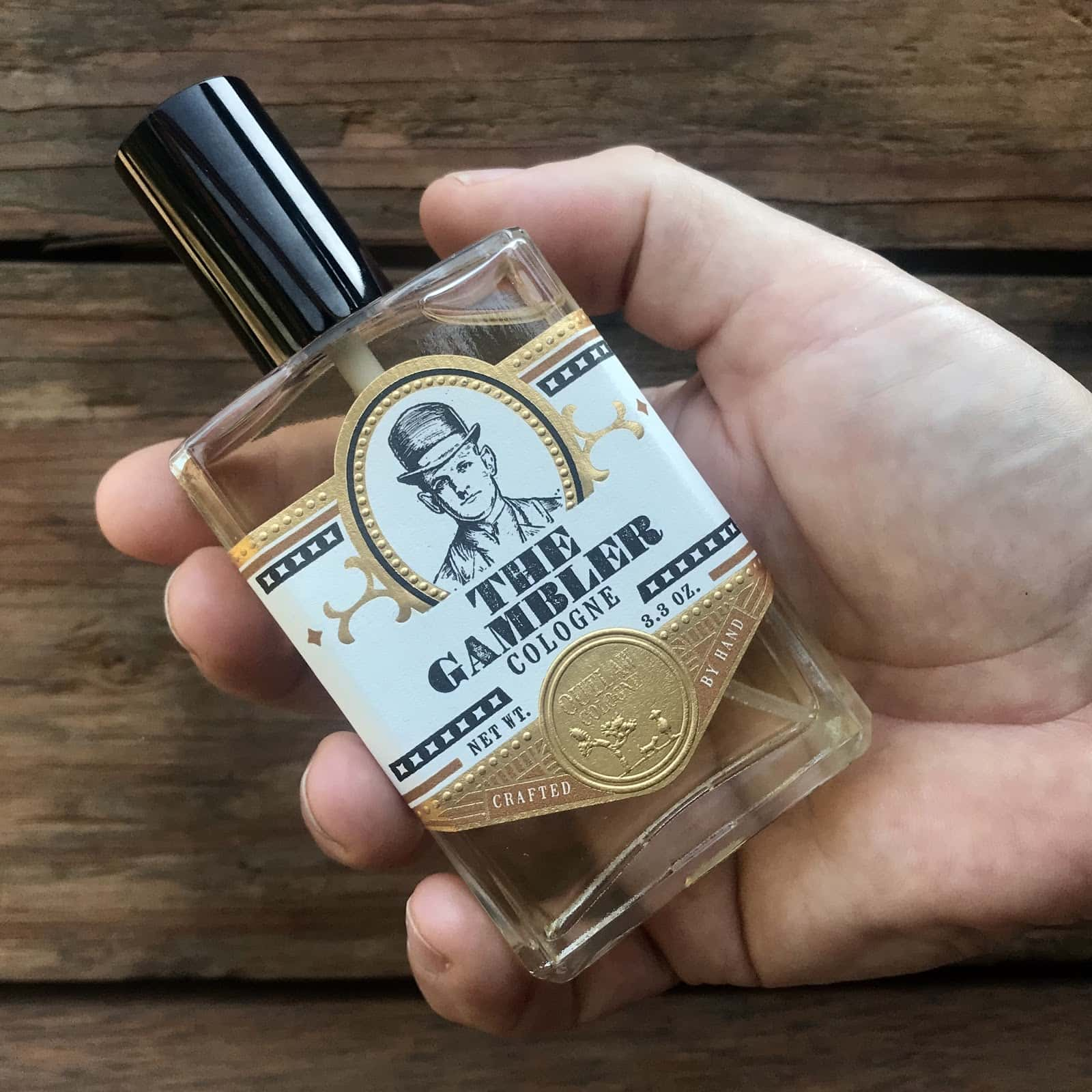
Absolutely. ABSOLUTELY. It’s this: If you can recover from a mistake, don’t even look at it twice. It’s not worth wringing hands about or speculating over what went wrong, you just have to move on. Business doesn’t have time for a pity party. Acknowledge the error and move on.
In the beginning, every day felt like a barrage of self-criticism. These days, I try not to even think twice about a problem. It has been a very useful life skill overall, I’ll tell ya.
The other thing I have learned is that our products aren’t for everyone. If 5% of people like our products, that’s superb. The global men’s grooming market is going to exceed $21B in 2018. If we can entrance just 5% of those customers, that’s still more than $1B/year!
And heck, our products appeal to both men and women. So that’s like… well… MORE than “more than $1B.” I’m not going to do the math, but it’s huge.
Ridiculous hubris? Perhaps.
A worthy goal? Hell yeah it is.
What platform/tools do you use for your business?
Shopify! I will always be a Shopify loyalist. They are an essential member of the Outlaw gang.
Quickbooks Online: Industry standard, but I’m a fan. I go to the Quickbooks Connect conference every year to keep up with updates and small business news.

Stamps.com: Buggy as hell, but it’s what we have.
SproutSocial: Pre-programs social media in an adjustable queue rather than a calendar, so I can just stack and publish messages easily. If I need to push a tweet or FB post further out, I just drag it further back in the queue.
HubSpot: We’re currently using a trial of HubSpot and I imagine we’ll likely transition to them next year. They’re so expensive, though.
In terms of productivity, I have a very huge and elaborate system that I’d be happy to share with anyone who wants to know. It’s too complicated to describe in this interview, though.
What have been the most influential books, podcasts, or other resources?
Gary Vaynerchuk and Tim Ferriss are both excellent reading and speakers. They market themselves incredibly well, and are very free with their information.
I actually wrote a blog post a couple years ago about my favorite business books. The list was written before Gary Vaynerchuck’s Ask Gary Vee and Tim Ferriss’s Tools of Titans, so it doesn’t include those two, but I’d consider them required reading.
In terms of breadth of information, anything Chris Brogan puts out is solid. He talks about pretty much anything an aspiring marketer needs to know. He’s humble, sweet, interesting, and brilliant.
I wish there were more women writers of this stuff… which really, I guess probably could be my next book (my first book, YOU-NICORN: 30 days to find your inner unicorn and live the life you love, is out now).
Advice for other entrepreneurs who want to get started or are just starting out?
Don’t expect that you have to know everything you need to do in order to get started. Accept that it will likely be a colossal mess and a wild ride, but that doesn’t make it any less worthy of an endeavor.
“I never said it would be easy, I only said it would be worth it.” - Mae West
Over the years, I have suffered many crises of faith about our product line. Hearing “No” 95% of the time is a very discouraging thing (remember, we’re only going for 5% of the men’s grooming market, so that means 95% of people probably won’t like us). But you just keep going, no matter what.
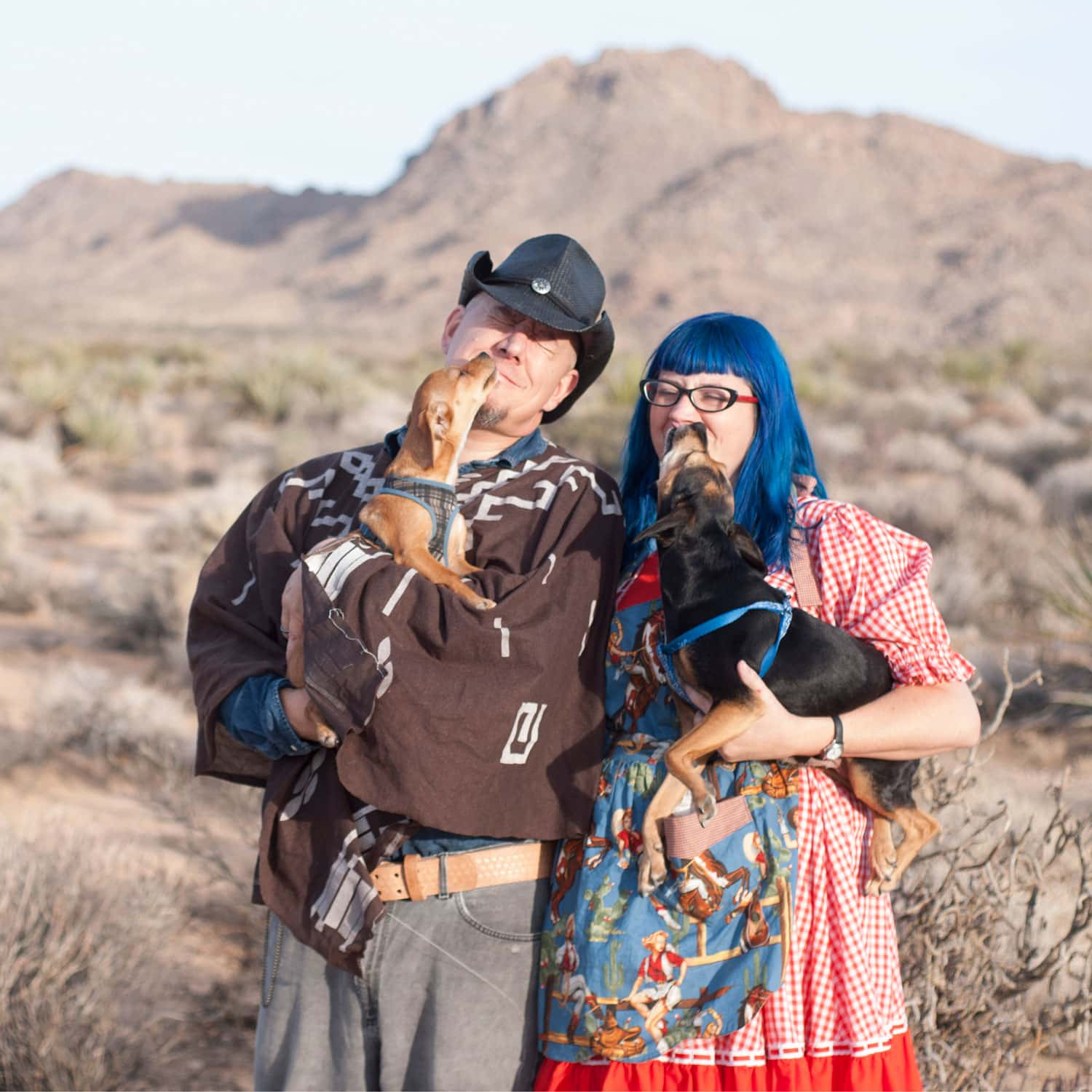
I’ve often said that sometimes the person who wins the rodeo is just the person stubborn and balanced enough to stay in the saddle the longest.
Are you that stubborn and balanced? These are learned traits, so if you’re not now, get focused on being stubborn and balanced.
Are you looking to hire for certain positions right now?
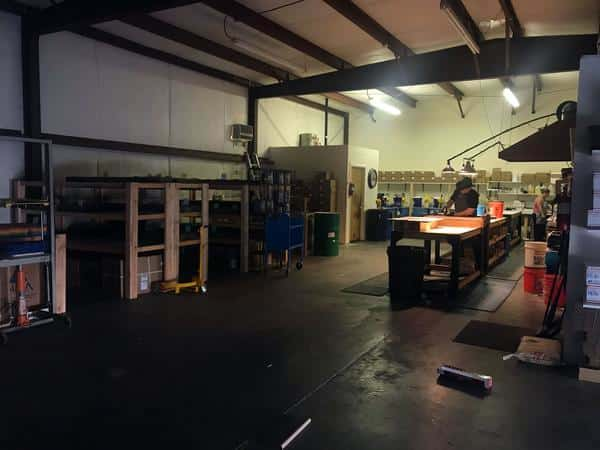
We’ll be hiring some positions next year. Follow us on Facebook and we’ll post ‘em there.
We’ll be looking for:
- Marketing manager (can be remote)
- Logistics manager (local)
- Assistant (local)
- Press outreach (can be remote)
- Sales manager (local)
Where can we go to learn more?
First, sign up for our newsletter. It’s more fun than a goat rodeo (100% of goats agree). We give out free stuff, have discount codes, launch new products, and generally have a rowdy good time.
We’re on Facebook and Instagram primarily, with an occasional Twitter appearance.
And if you want to hear about that marketing book that I’m writing, you can subscribe to my personal newsletter.

Download the report and join our email newsletter packed with business ideas and money-making opportunities, backed by real-life case studies.

Download the report and join our email newsletter packed with business ideas and money-making opportunities, backed by real-life case studies.

Download the report and join our email newsletter packed with business ideas and money-making opportunities, backed by real-life case studies.

Download the report and join our email newsletter packed with business ideas and money-making opportunities, backed by real-life case studies.

Download the report and join our email newsletter packed with business ideas and money-making opportunities, backed by real-life case studies.

Download the report and join our email newsletter packed with business ideas and money-making opportunities, backed by real-life case studies.

Download the report and join our email newsletter packed with business ideas and money-making opportunities, backed by real-life case studies.

Download the report and join our email newsletter packed with business ideas and money-making opportunities, backed by real-life case studies.
